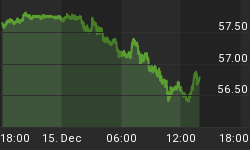The following are my post-Payrolls tweets (@inflation_guy), along with some charts and added thoughts.
-
Payrolls number close, expected 85k was actually 146k but 49k of downward revisions. Amazingly good guesses given Sandy.
-
Unemployment Rate drops to 7.746% from 7.876% (so really 0.1 drop not 0.2 drop), due to sharp particip drop to 63.6 from 63.8
-
Not a particularly good report; haven't had >200k jobs since March, after these revisions. But chatterverse will say it's bullish stocks
-
Goods producing jobs -22k; service-providing +169k. Retail trade +53, allaying some fears that weak Xmas season could hurt #s.
-
Here's some good news: Aggregate weekly hours rose to a new post-2008 high of 104.1, which is higher than it was in 2000. [Note: chart below]
-
"Not in labor force" rose again: second highest total ever. Not in labor force, want a job now also rose. This is "shadow unemployment." [Note: charts below]
-
The chatterverse will say it's a good report, but in my view it isn't good enough, and we'll quickly turn to fiscal cliff again.
As noted, this isn't a great report. It continues the theme of tepid recovery, but without the people leaving the labor force the unemployment rate would be much higher. The chart below (source: BLS via Bloomberg) shows the "not in labor force" numbers going back decades.

Now, the thing is that I'm not sure this is a temporary phenomenon - some of these people are leaving the labor force because they're giving up, but some of them are leaving the labor force because they're retiring, or retiring early. We would be expecting some rise in this number anyway, due to the fact that Baby Boomers are starting to retire. So I think the chart below (same source) is a better view of the part of this rise that's truly disturbing. It shows the category "not in labor force, but want a job now." These are people who are not counted in the labor force because they're not looking for a job, but if someone called and offered them a job they'd take it. Presumably, when the job market starts visibly recovering, these people will start to look again.

Finally, let's not lose sight of the fact that the economy is still stumbling, but at least it's stumbling forward. The chart below (same source) shows the aggregate weekly hours worked by production or nonsupervisory employees (2002=100).

As I say above, this isn't a great report, and it isn't a bad report - in my view, it's good enough so that the CNBC talking heads can tell everyone to buy but not so good that it will re-direct the narrative from the fiscal cliff. And it certainly isn't good enough to claim that there's any evidence the economy is "ready to explode" once the fiscal cliff is resolved.
















